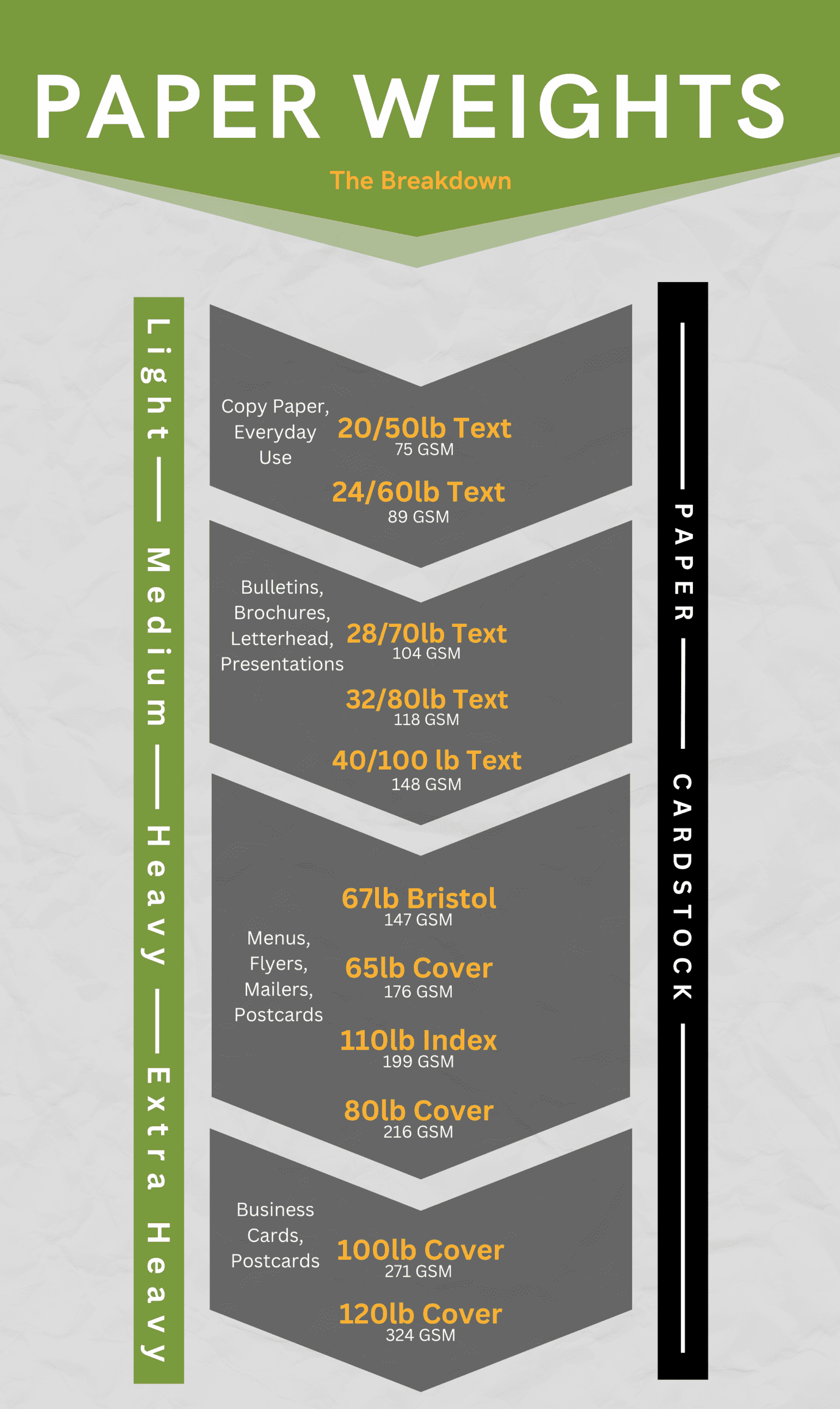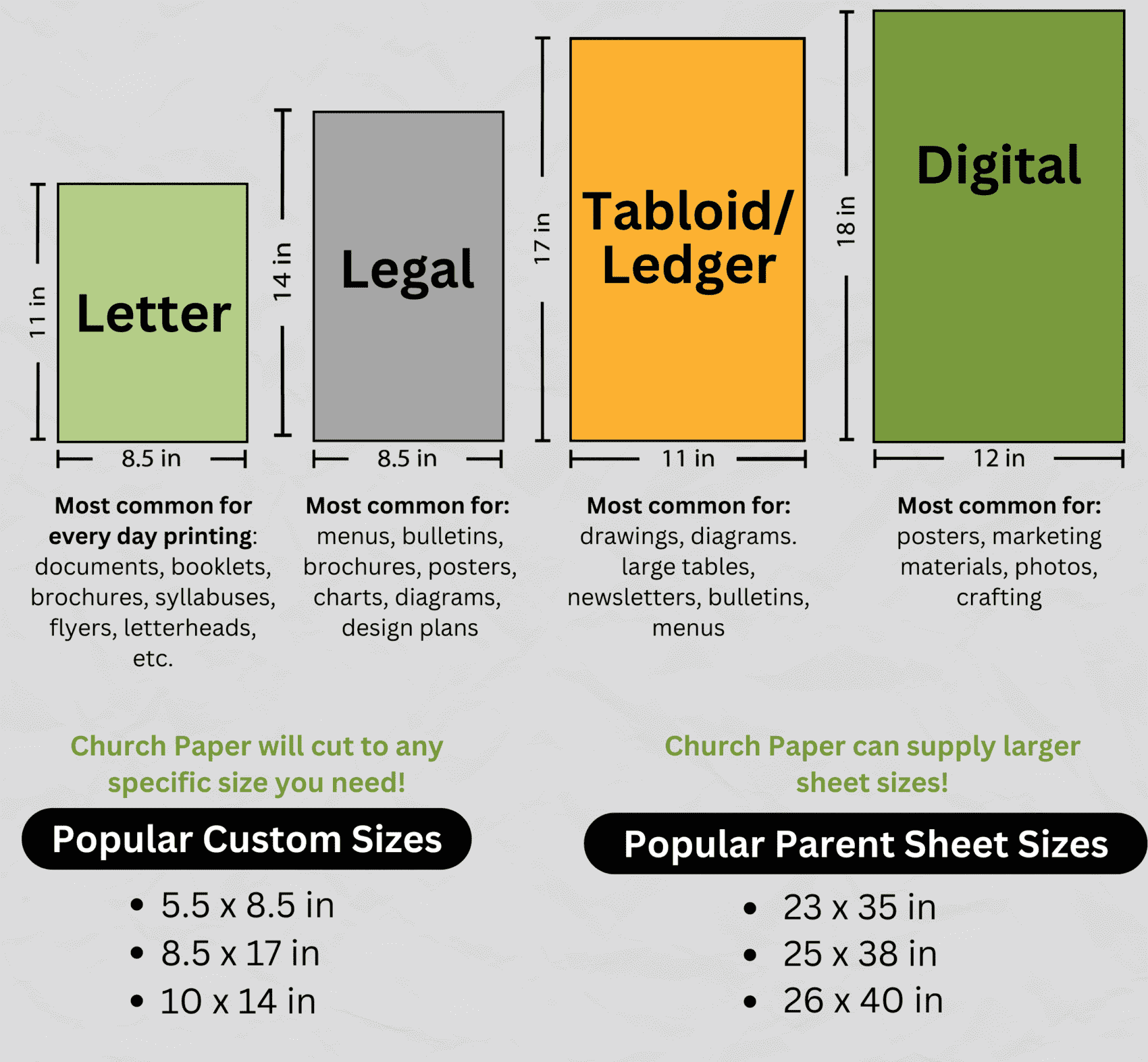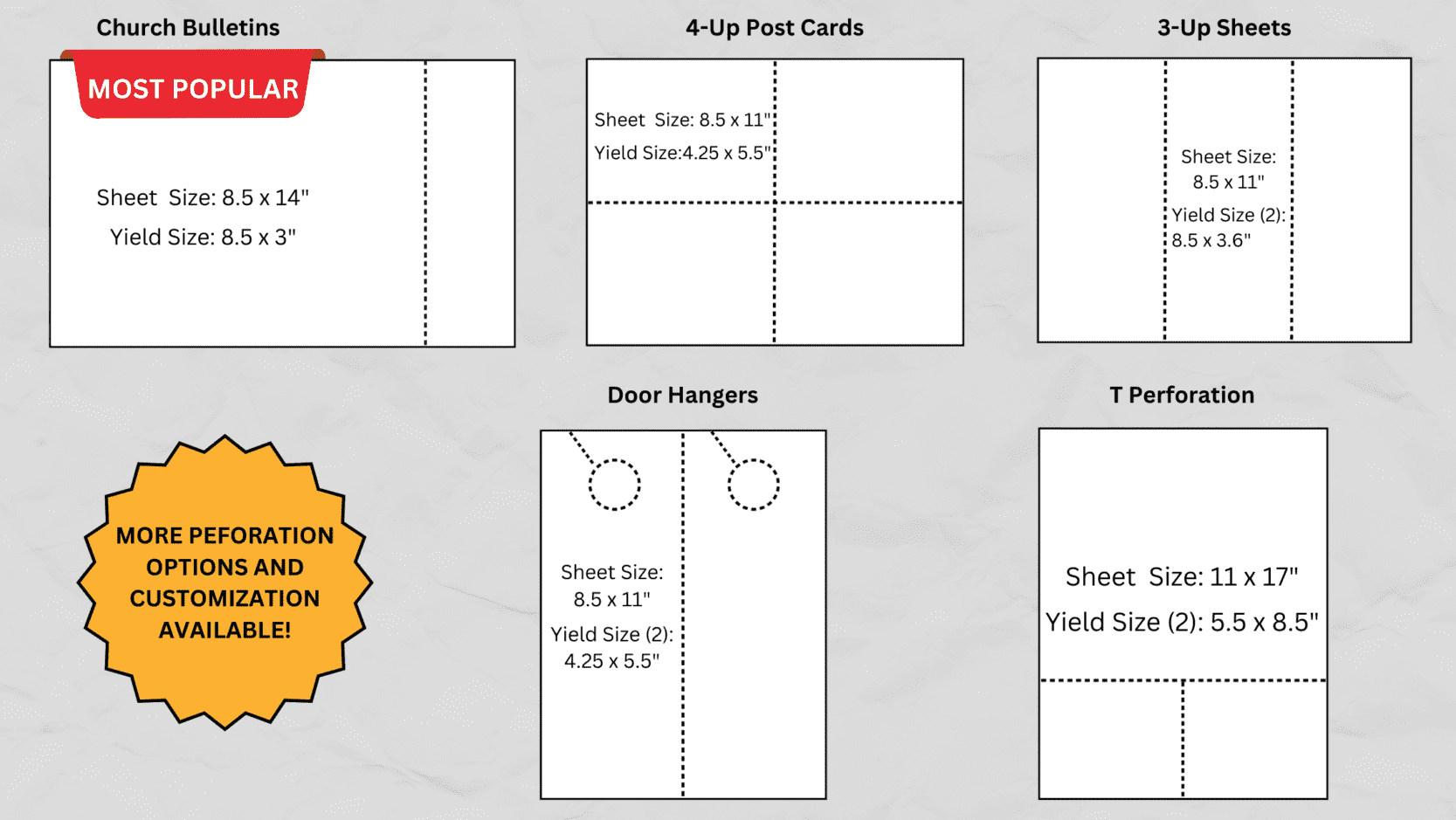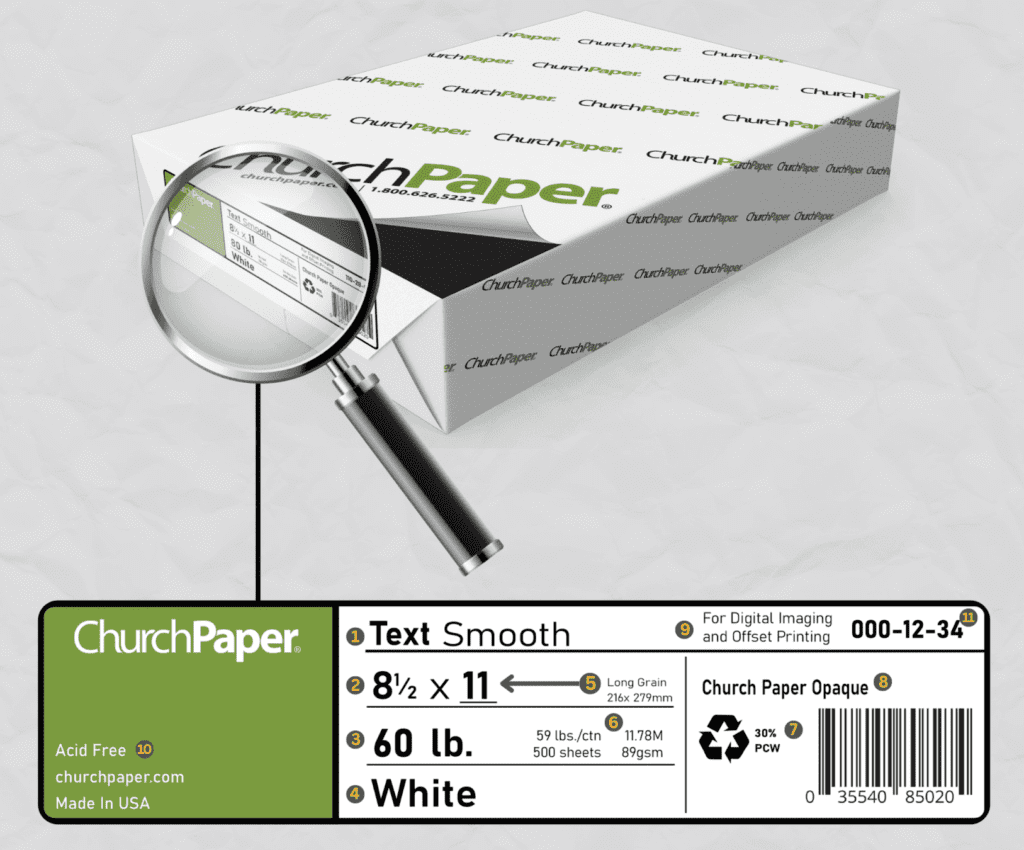What paper weight should I use?
For thin paper, there are two Basis Weights: Bond and Text. Bond and Text weights are often used interchangeably. Just like Celsius and Fahrenheit can be used to describe the same temperature, both Bond and Text Basis Weights can be used to describe the same paper.
Thick papers (CARDSTOCK) can be classified using three Basis Weight names: Bristol, Cover, Index. Unlike thin paper, cardstock weights are not listed interchangeably.
Another way of describing the weight of paper is GSM, the metric way. GSM stands for Grams per Square Meter. GSM is the weight in grams of a square meter of the paper. A lower GSM number means a lighter weight and a higher GSM number means a heavier weight. When you print, printer settings often use the GSM number to categorize the media or paper type.
HOW TO USE IT
20/50-lb. Bond/Text - Multipurpose Text Basic copy paper. Good for one side printing. Most economical.
24/60-lb. Bond/Text - Better quality Text Use for Bulletins, Newsletters, Letterheads. Use in all machines & folders. Is thicker than Multipurpose 20/50-lb.
28/70-lb. Bond/Text - Best quality Text Use for Bulletins, Newsletters, Letterheads. NOT card stock. Less "see-thru." Excellent choice for Riso & other liquid ink duplicators. Is thicker than 24/60-lb.
32/80-lb. Bond/Text - Thickest Text Use for Bulletins, Newsletters and other important documents. Thicker than 28/70-lb., but NOT a card stock. Excellent choice for Riso & other liquid ink duplicators.
67-lb. Vellum - Card Stock Used for Post Cards, Door Hangers, Covers and Posters. Has a Vellum Finish.
65-lb. Cover - Card Stock Used for Post Cards, Door Hangers, Covers and Posters. Stiffer than 67-lb. Vellum Bristol
80-lb. Cover - Card Stock Used for Post Cards, Door Hangers, Covers and Posters. Thicker and stiffer than 65-lb. Cover
110-lb. Index - Card Stock Used for Post Cards, Door Hangers, Covers and Posters. A stiff and smooth card stock



